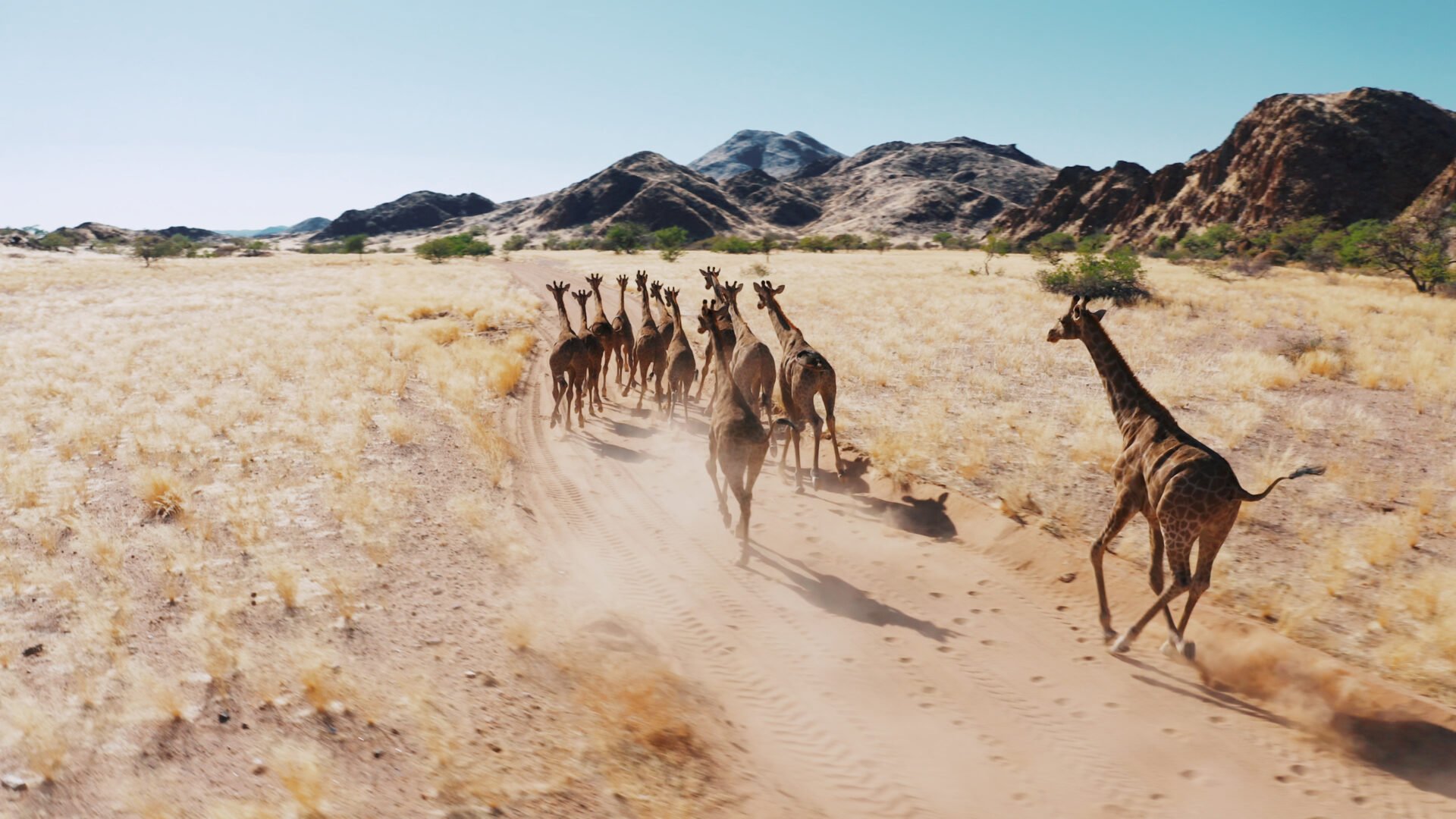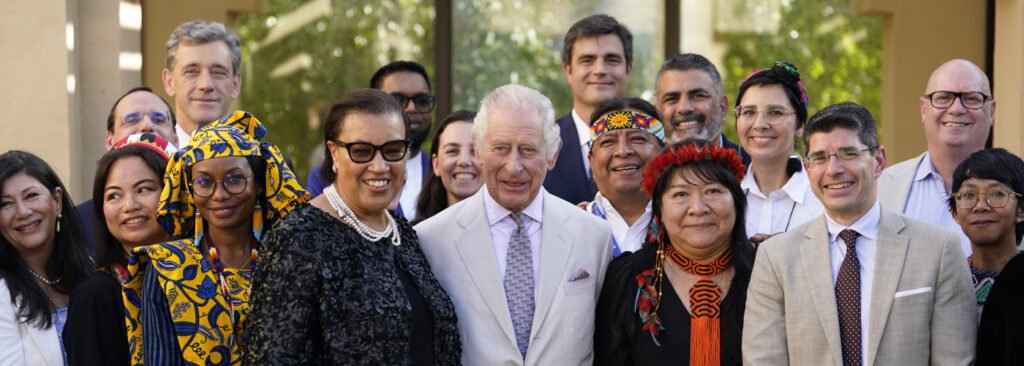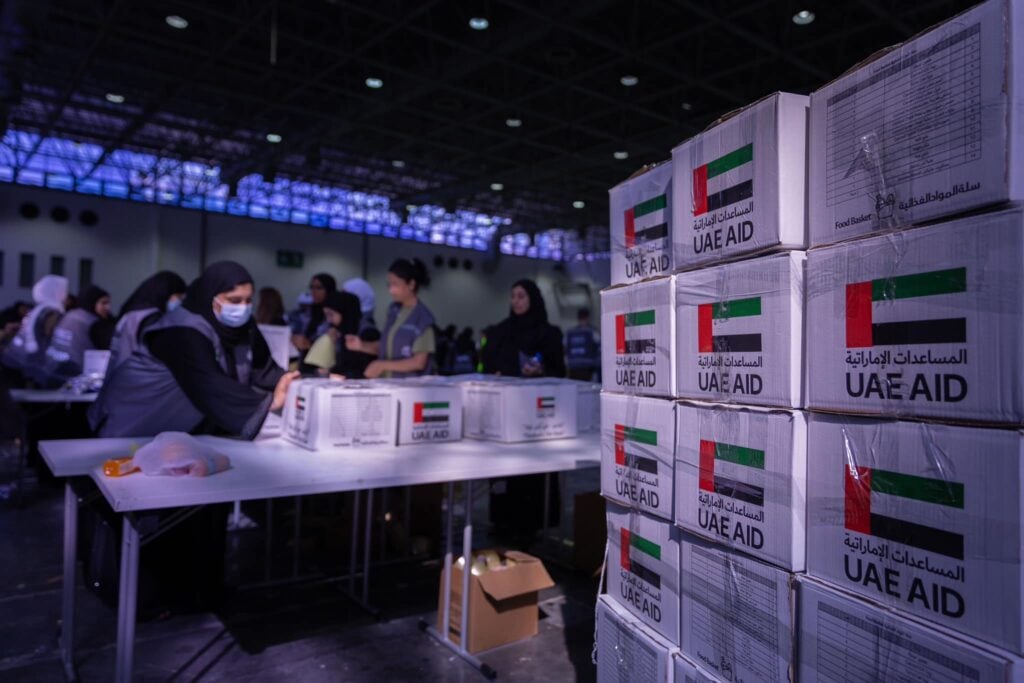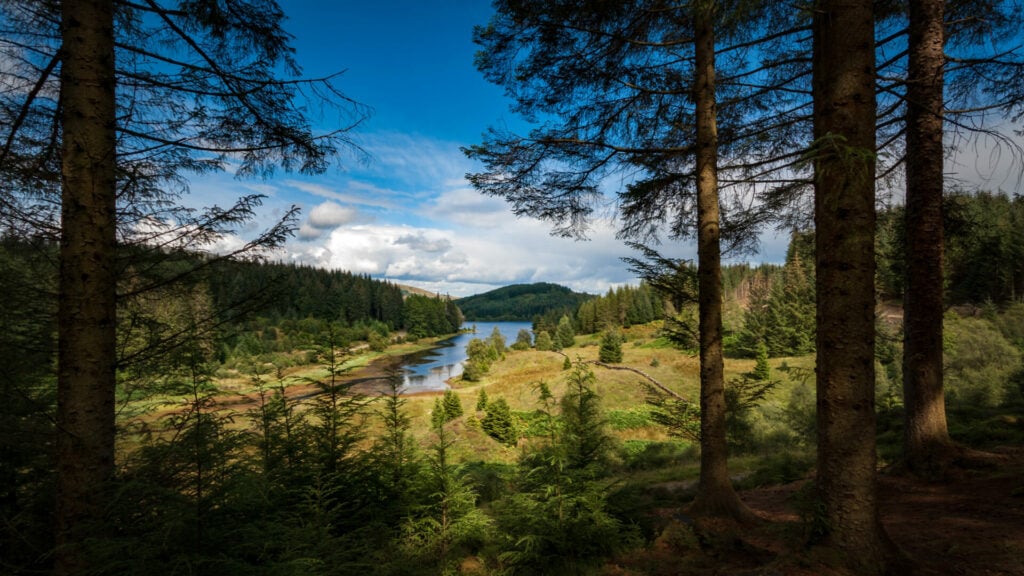One of Africa’s most emblematic species, giraffes have stood sentinel over the continent’s sweeping golden savannas for eight million years. An almost guaranteed safari sighting, their numbers seem infinite. But in reality, the wild elephant population outnumber their leggy friends by a whopping 350 percent.
‘Giraffes are experiencing a ‘silent extinction’,’ wildlife biologist and biodiversity activist Monica Bond tells The Ethicalist. According to the International Union for Conservation of Nature (IUCN), giraffe populations have plummeted by 40 percent over the last three decades, and have already vanished from seven African countries. With the U.S. Government seeking to list giraffes as endangered for the first time in history, protecting these galloping giants has never been more needed.
Growing Rains and the Trinket Trade
‘The two biggest threats to giraffes are illegal poaching – mostly for meat [that’s often labelled in ‘beef’ in local markets] – and habitat loss from building farms and towns on their natural savannas,’ explains Monica. These graceful giants’ spotted hides and bones are fashioned into everything from rugs to gun covers and bracelets that reach as far as American shores, where the trade in giraffe parts is entirely legal.
These graceful giants’ spotted hides and bones are fashioned into everything from rugs to gun covers and bracelets that reach as far as American shores, where the trade in giraffe parts is entirely legal.
Meanwhile, intensified agriculture and urbanisation is robbing Africa’s sky-high megaherbivores of their favourite food: acacia. Giraffes can consume up to 45kg of the acacia’s leaves, flowers and buds daily with their 50cm-long prehensile tongues. It’s not uncommon for the towering animals to get pollen stuck to their head and necks in the process, making them prolific pollinators as well as browsers.
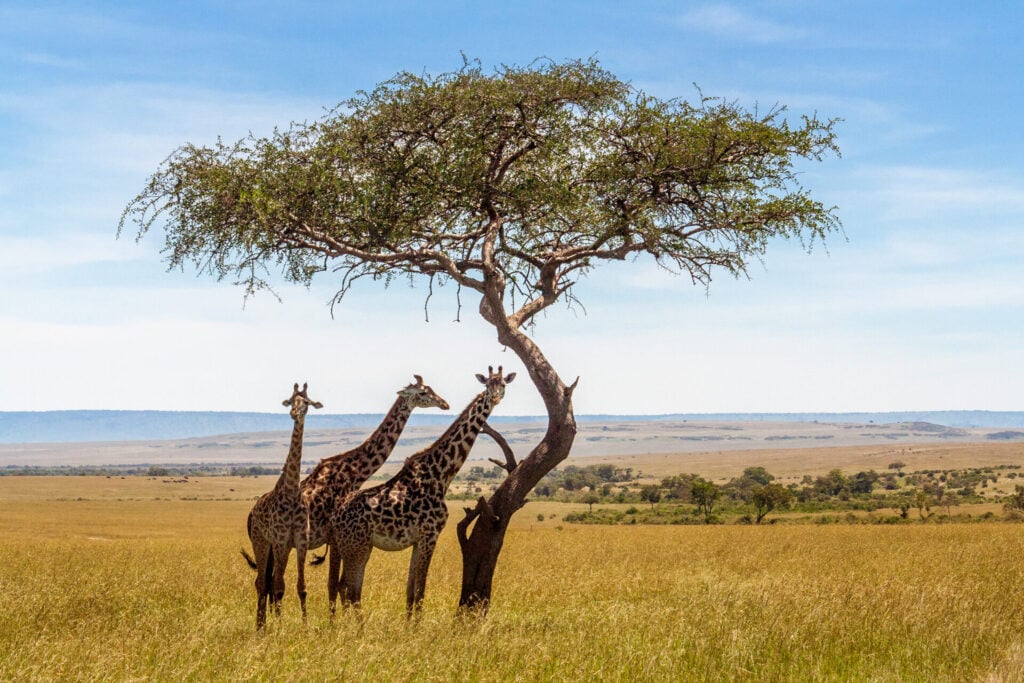
‘Seasons with unusually high rainfall are harmful to their survival too, so extreme rains predicted by climate change could spell trouble for giraffes,’ Monica adds.
Megafauna on the move
South Africa is a stronghold for giraffes, making it perfect for translocating these gentle giants to corners of the continent where herds are either struggling or already locally extinct. But moving earth’s loftiest living land mammal – which stands at five-metres tall and has a heart the weight of a watermelon – is no mean feat.
Former warring tribes – the Ilchamus and Pokot – have joined forces to rewild rare Rothschild’s giraffes, that were snuffed out in the sixties by poaching and civil unrest in their native Baringo county
The Giraffe Conservation Foundation (GCF) have mastered the art of moving this magnificent megafauna. In May 2024, the science-backed NGO assisted an ambitious two-day 800-mile cross-border translocation of 13 not-so-unlucky giraffes from central Namibia to their historical range. It’s hoped the flagship species will help restore the biodiversity of southwestern Angola’s Iona National Park by spreading seeds and shaping trees.
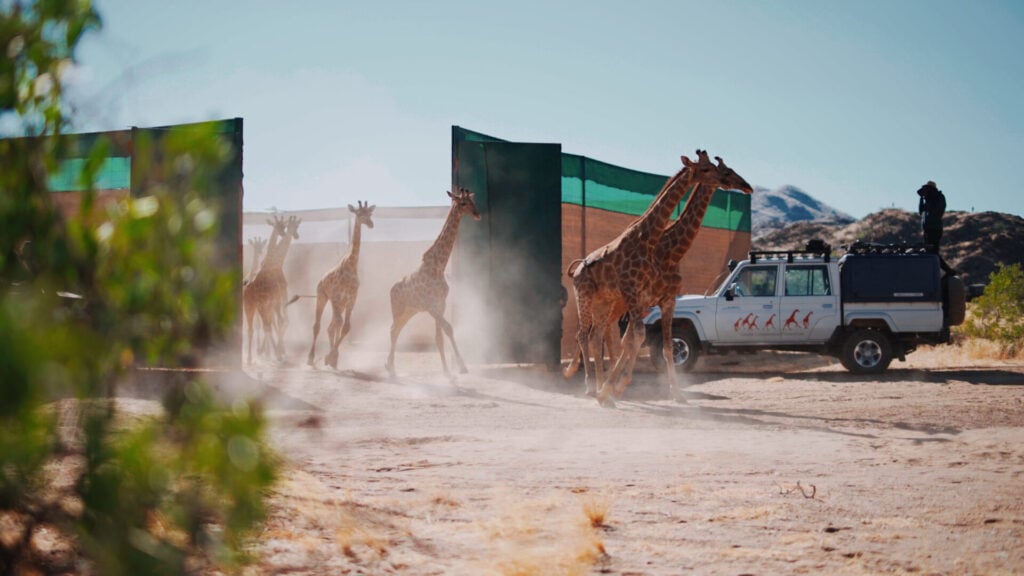
Some 1,500-miles away in Kenya’s wildlife-rich Great Rift Valley – which spans one sixth of the planet’s circumference – giraffes have become an unlikely pathway to peace. Former warring tribes – the Ilchamus and Pokot – have joined forces to rewild rare Rothschild’s giraffes, that were snuffed out in the sixties by poaching and civil unrest in their native Baringo county.
With support from non-profit Save Giraffes Now and the Kenya Wildlife Service (KWS) the two ethnic groups manage west-central Kenya’s 44,000-acre lake fringing Ruko Community Conservancy; inhabited by twenty-something giraffes translocated here by custom-made barge and truck. Established in the mid-2000s, Ruko was originally set on a peninsula on Baringo’s namesake lake, before extreme flooding forced it to relocate to the mainland in 2021.
Giraffe’s Guard-ian Angels
Another Kenyan community-run conservation programme is striving to revive giraffe populations by recruiting a small army of ‘Giraffe Guards’ (or ‘Twiga Walinzi’ in Swahili). Their mission is to safeguard the reticulated giraffe, so named for its coat’s striking geometric pattern. ‘All fourteen Twiga Walinzi members hail from pastoral communities in northern Kenya (Pokot, Samburu, Laikipiak Maasai), and most are local members of the communities they work in,’ researcher in population sustainability at San Diego Zoo Wildlife Alliance (SDZWA) Jenna Stacy-Dawes tells The Ethicalist.
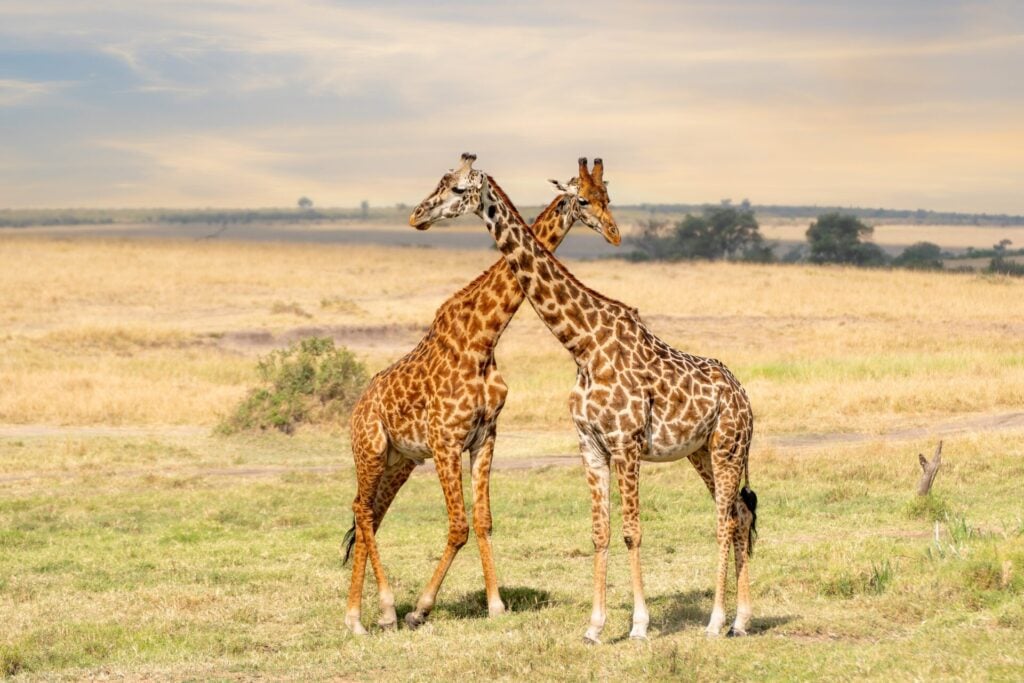
The SDZWA-backed ‘Twiga Walinzi’ initiative was launched in collaboration with international conservation partners like GCF in 2016. Part-ranger-part-researcher, ‘Twiga Walinzi members do a little bit of everything,’ Jenna explains; from snare removal and school outreach to camera trapping and giraffe poop collecting.
‘Pastoral communities typically value and appreciate the beauty of giraffes and other wildlife species; however societal changes and drought have led to increased giraffe hunting for food,’ SDZWA’s Senior Researcher in Community Engagement Dr. Tomas Pickering tells The Ethicalist.
‘Over time, Twiga Walinzi members have been able to show their communities that there are tangible benefits of conservation. As a result, locals are proud of the giraffe and have a desire to protect them,’ Jenna adds. Since the project started, several studies, including one published in Journal for Nature Conservation, reveals that the changed perception towards the animals by local people has led to a decline in poaching for bushmeat.
According to the International Union for Conservation of Nature (IUCN), giraffe populations have plummeted by 40 percent over the last three decades, and have already vanished from seven African countries.
The reticulated giraffe’s Kenyan cousin is the Masai giraffe – also found in Tanzania – that’s identifiable by its coat’s fuzzy-edged spots which resemble oak leaves. An individual giraffe’s unique fur markings are equivalent to a human fingerprint. ‘Recognising giraffes by their patterns allows scientists to learn about births and deaths, movements, social structure and health,’ Bond says.
In 2011, she co-founded Wild Nature Institute’s Masai Giraffe Project: the single largest global study of giraffe survival and reproduction. ‘We’re monitoring more than 4,000 individual giraffes [in Tanzania’s Tarangire and Serengeti-Ngorongoro ecosystems and Arusha National Park] throughout their lifetimes without ever having to capture individuals, which is expensive, potentially dangerous and can alter the animals’ behaviours,’ Monica says. Technology has been pivotal to the project’s ongoing research. Specially-created computer software IDs the unique fur markings of thousands of giraffes which the team photograph on the same network of dirt roads, six times a year.
Tackling Endangerment with Embryos
Remarkably, it wasn’t until recent history that these social, long-lived megafauna were reclassified into four (versus one) distinct species: Masai, northern, reticulated and southern. ‘Although superficially seeming the same, differences between the four species of giraffe is comparable to the difference between a brown bear and a polar bear or between a wolf and coyote,’ zoologist and Save the Giraffes President Jason Pootoolal says. ‘Having a more accurate picture of giraffe populations based on species allows us to communicate the urgency we are facing in saving the giraffe,’ he adds.
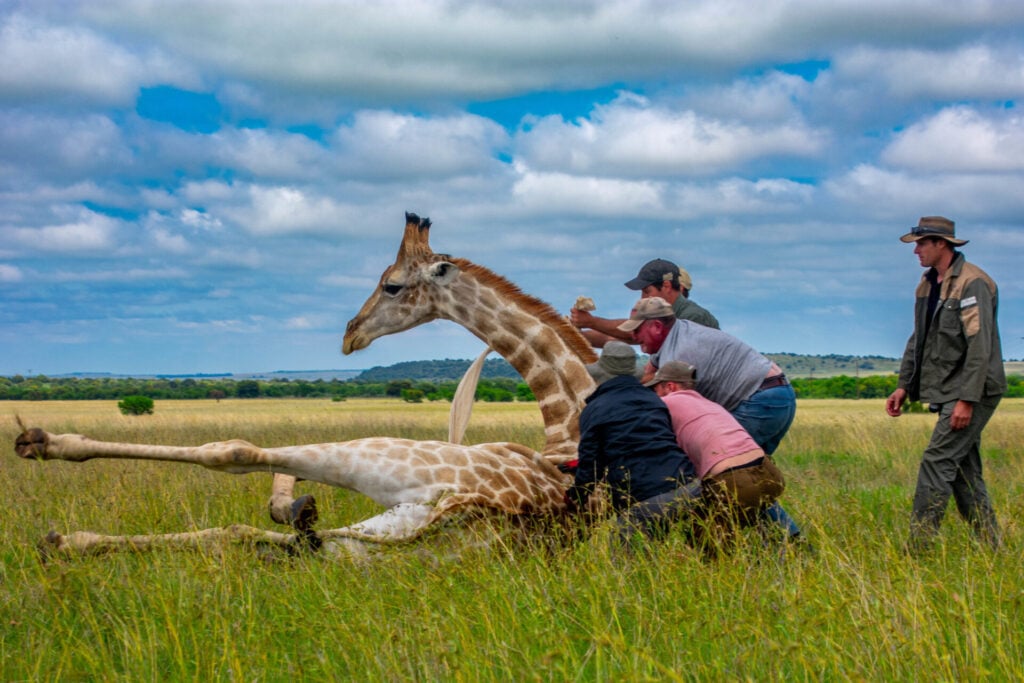
Restoring genetic diversity in declining giraffe populations will also play a big part in keeping these living lookout towers roaming Africa’s plains for the foreseeable. Hopes are pinned on the world’s first giraffe embryo transfer, that’s on track to happen this year. Almost two decades in the making, the scientific breakthrough in giraffe reproduction began with the capture and collaring of twenty giraffes in South Africa’s Northern Cape; a challenging undertaking involving tranquilisers and helicopters.
‘[During the project’s initial phase] we successfully collected semen from wild giraffes for the first time,’ Save the Giraffe’s Director of Veterinary Care and Research Programs Dr. Stephen Momberg says. ‘We recognised that assisted reproduction – and the science behind it – would not only deepen our understanding of giraffe physiology but also benefit the species in the long term.’ He continues, ‘the more we understand about a species and the habitat it depends on, the better equipped we are to protect it, not only now, but for future generations.’

